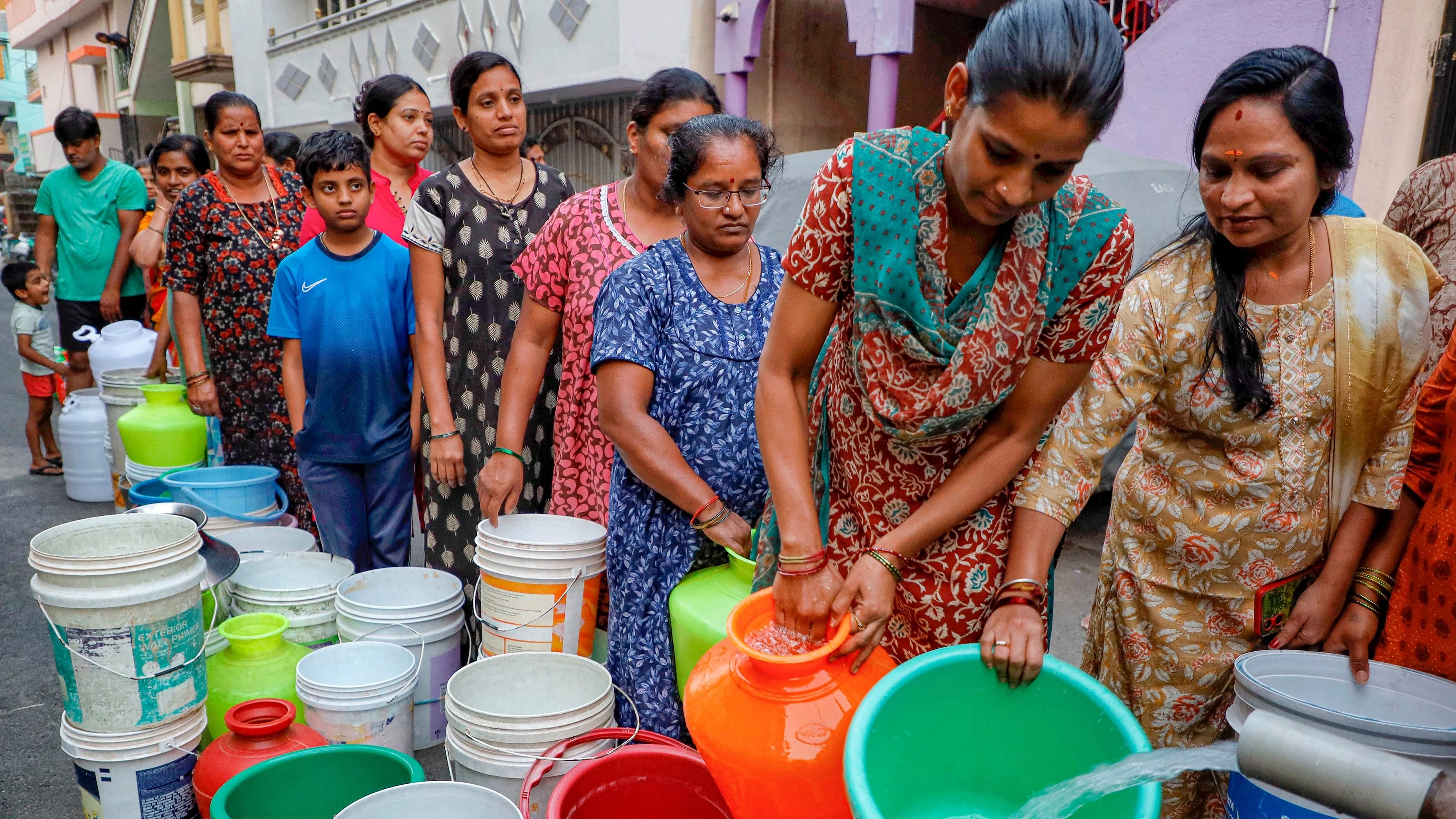
People collect drinking water from a water tank amid the ongoing water crisis in Karnataka, at Shivananda Nagar in Bengaluru.
Credit: PTI Photo
Do you realise that the water you drink is the very same water that the dinosaurs drank and the earliest humans drank? What I mean to say is that water on earth has remained the same over time. It just keeps changing form — liquid, gas or solid — but essentially it is the same water getting recycled over the centuries with no increase or decrease in the amount. So why all this talk about a looming, disastrous water shortage? From about 14 million humans 5,000 years ago, there are 8.1 billion humans using the same water today! And then there are the uses we put water to… it takes 95 litres of water to produce 1 kilowatt-hour of electricity. And it takes about 5,600 litres of water to manufacture one pair of jeans and 12,700 litres to make a smart phone. I bet they didn’t have to make those 5,000 years ago! Scarily, it is predicted that by 2050, we will be using 50% more water than we did in the year 2000. We simply don’t have enough water.
The sun heats up the surface of the earth, water evaporates from lakes and rivers and leaves transpire turning water into vapour. As the vapour rises high into the air it condenses and these clouds are moved around by the wind until there’s too much water for the air to hold. That’s when droplets of water collide and merge to precipitate as rain, snow, hail or sleet. Rivers and lakes fill and the ocean level rises until the cycle begins all over again. Interestingly, water can go from solid to gas without ever becoming a liquid. This is how ice can evaporate directly into air. Water is the only substance on earth that is found naturally in three forms: liquid, solid and gas.
With all the rain, the surface of the ocean is a mix of salt and fresh water. Below this is an area called the halocline which has rapidly changing levels of saltiness. It also seperates the top layer of the ocean from the deep sea.
About 71% of the earth’s surface is covered by water. Unlike other planets in the solar system, we are indeed the ‘Blue planet’. However, about 97% of the water is salt water and only 3% is fresh. To make matters worse, 2.5% is trapped in glaciers, in the atmosphere, or in the soil, making just 0.5% of all fresh water available for drinking. Agriculture uses up a lot of water and within that, meat production most of all.
Just as clouds move water around the earth, so do ocean currents. Water is ever moving and ever transforming. Water changes the earth’s geography. Water’s persistent pressure causes new rivers to appear and old ones to disappear. Life itself emerged from the ocean. And civilisations grew on the banks of rivers. Think Indus Valley civilisation and the Egyptian civilisation which flourished on the banks of the Nile. In fact, most cities appeared on the banks of rivers giving inhabitants water for drinking, washing, agriculture and transportation as needs grew.
Water is made up of one oxygen atom bonded to two hydrogen atoms. One end of the water molecule is positively charged, and the other end is negatively charged. The positive and negative charges are attracted to each other, and this makes the molecule stick together. The top layer of water acts like an elastic ‘skin’ called surface tension, caused because of the attraction between molecules. Due to this surface tension, small insects can walk on water. And since ice is less dense than water and floats on the surface all the marine animals in the Arctic continue to live in the depths under the shelter of the ice.
Water defies gravity, moving up stems of plants to carry nutrition to the upper parts. Water’s ability to move up the surface fibres of a solid regardless of gravity is called capillary action.
So, can we afford a water crisis? Forget jeans and cell phones! We can live 3 weeks without food but barely 3 days without water. Our bodies are 60-70% water; our brains are 75% water; our lungs are nearly 90% water; and our blood is about 82% water. A dripping tap can waste nearly 75 litres a day. Turn it completely off! Now!